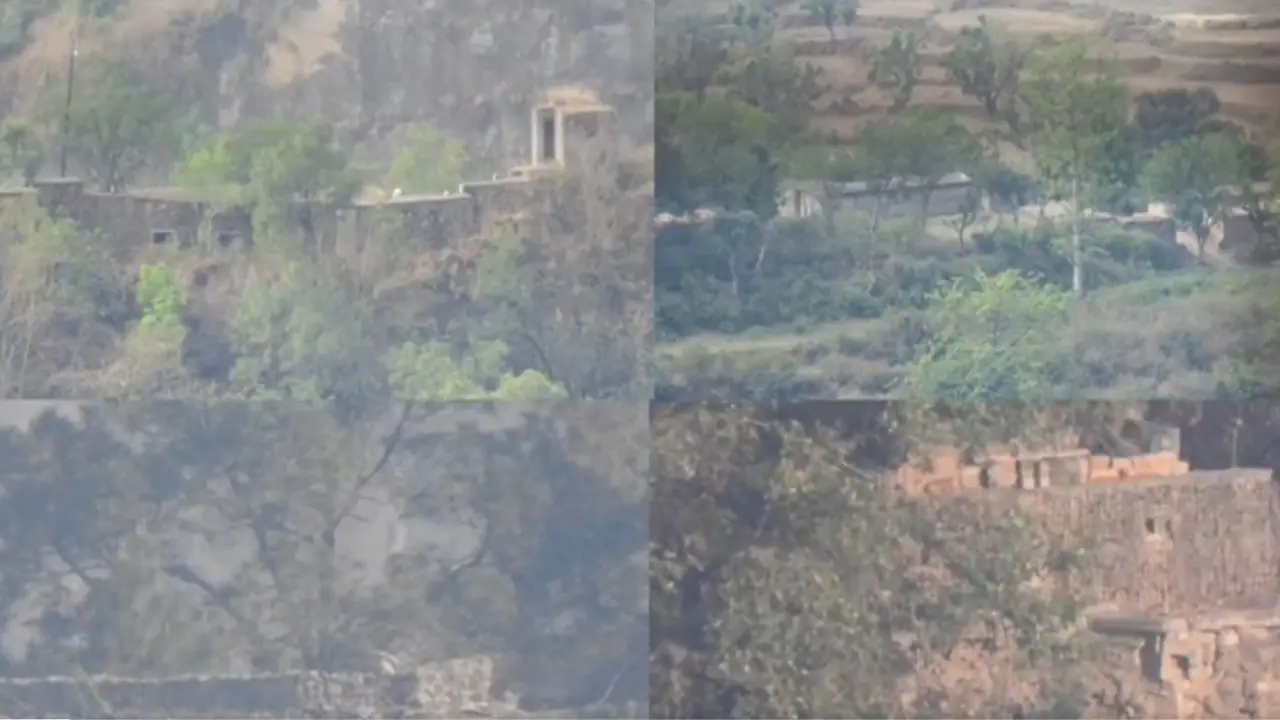Pakistan attempted to strike 26 locations, including military as well as civilian installations. India attacked six Pakistan’s military installations, using air-launched precision weapons from fighter aircrafts.
In response to Pakistan’s attempt to strike 26 locations, including military as well as civilian installations from Srinagar in Jammu and Kashmir to Naliya in Gujarat, India attacked six Pakistan’s military installations, using air-launched precision weapons from fighter aircrafts on early Saturday.

After 01:40am, Pakistan launched several high-speed missile attacks at several air bases in Punjab, including Pathankot and Bathinda.
Among the military installations that Indian armed forces targeted in Pakistan included technical infrastructure, command and control centres, radar sites and weapon storage areas at Rafiqui, Murid, Chaklala, Rahim Yar Khan, Sukkur and Chunian.
Using the precision munitions, India also attacked the radar sites at Pasrur and Sialkot aviation base. However, the Indian forces ensured minimum collateral damage while carrying out the missions. While carrying out aggressive actions in India’s western frontiers, Pakistan employed a number of threat vectors, including unmanned combat aerial vehicles (UCAVs), drones, long-range weapons, loitering munitions and fighter aircrafts to target civilian areas and military infrastructure.
However, most of their threat vectors were neutralized by India’s air defence system deployed in depth along the border belt.
Targeting the civilian residential areas in Punjab’s Amritsar, Pakistan military launched multiple Byker YIHA III Kamikaze drones but they were detected, tracked and engaged within seconds of violating Indian airspace. The Army air defence gunners shot them in the mid-air in an effort to ensure that no debris fell on civilian property and no casualties were sustained.
A defence source said: “Initial analysis indicates that the drones carried high-explosive payloads intended to inflict maximum damage on innocent civilians.” The operations which India has codenamed --- “Operation Sindoor” and Pakistan as “Bunyan Ul Marsoos” have entered into fourth day, targeting each other’s air defence systems.
Why militaries of India and Pakistan are targeting each other’s air defence systems
Sources in the defence and security establishment said that it is imperative to neutralize the enemy’s radar systems, command and control systems, and surface-to-air missiles.
“Once you succeed in it, fighter jets can be employed easily to target the enemy’s installations and also allow land troops to sneak into their territory,” said the sources.
Talking about the Russia-Ukraine war, the sources said that the Ukrainian air defence systems have remained active and the reason no conclusion has been drawn.
Asianet Newsable English spoke to Director General of Centre for Land Warfare Studies (CLAWS) Lieutenant General Dushyant Singh (Retd). Lt Gen Dushyant Singh was of the view that this is the first step to dominate the air space by destroying the enemy’s air defence assets.
In the aftermath of Pahalgam terror attack of April 22 in Jammu and Kashmir, Lt Gen Singh said: “Indian side possibly decided that we must conduct the operation against the terrorists who are indulging in these kinds of operations along wherever they are irrespective, whether they are opposite J&K or if they are opposite to Punjab or they are opposite Ganganagar in Rajasthan and accordingly the targets were selected of their infrastructure and their likely locations, and they were targeted in a coordinated manner.”
“So accordingly the strike was done.” India targeted the terrorist infrastructures but Pakistan resorted to attack India’s military and civilian installations, he said.
“India also wanted to clearly give a message that Pakistan cannot back them. But the backers are obviously Pakistani military and yet we refrained from directly targeting the Pakistani military installations. But if these guys were in the terrorists’ camps, then it is our endevour that they should also get the message.”
The director general of CLAWS said: “The Pakistan decided to escalate it. Since they decided to escalate it and targeted our military installations. So any army which has confrontation with another army would automatically be the first step to achieve air dominance. Because unless you achieve your air dominance you will not be able to conduct your operations or war.”
“This opportunity was undertaken and accordingly we destroyed all the defence systems, etc. Pakistan has taken yet further by launching operations against civilians, along the line of control they increase the level of violence by artillery fire, resulting in death of civilians, targeting our religious places like Gurdwara. So they left us with no option, but to strike further.”
“So accordingly, India retaliated and this retaliation and counter retaliation is going on as per the policy where we said that we undertake precise and measured response to whatever Pakistan throws at us. While we are doing all this the army will be prepared for escalation of the conflict level of war. So accordingly, we are also targeting their airbases now.”
He further added that: “Whenever any conflict starts no country wants to remain unprepared for likely escalation either to localized war or full-fledged war.”
India attacked Pakistan’s air defence systems:-- It is in this context, in a counter-strike operation, India’s Harop drone destroyed Pakistan’s air defence system at Lahore – which houses Chinese-origin HQ-9P.
It has a maximum engagement distance of 125-km and is said to be capable of intercepting aircraft and cruise missiles. It must be noted that Pakistan's HQ-9 air defence system is similar to what India had procured from Russia --- the S-400 triumf system.
However, HQ-9 and other air defence systems HQ-16FE failed to detect and defend from air attacks. Procured from Russia, India’s S-400 is among the most advanced in the world. They are capable of tracking targets up to 600-km away and intercepting threats at ranges of up to 400-km.
In 2018, India signed a contract with Russia to procure five regiment of S-400 Triumf air defence system, also known as "Sudarshan Chakra” in India. Of these, three squadrons are already operational, while the remaining two are expected to be delivered by 2026.


